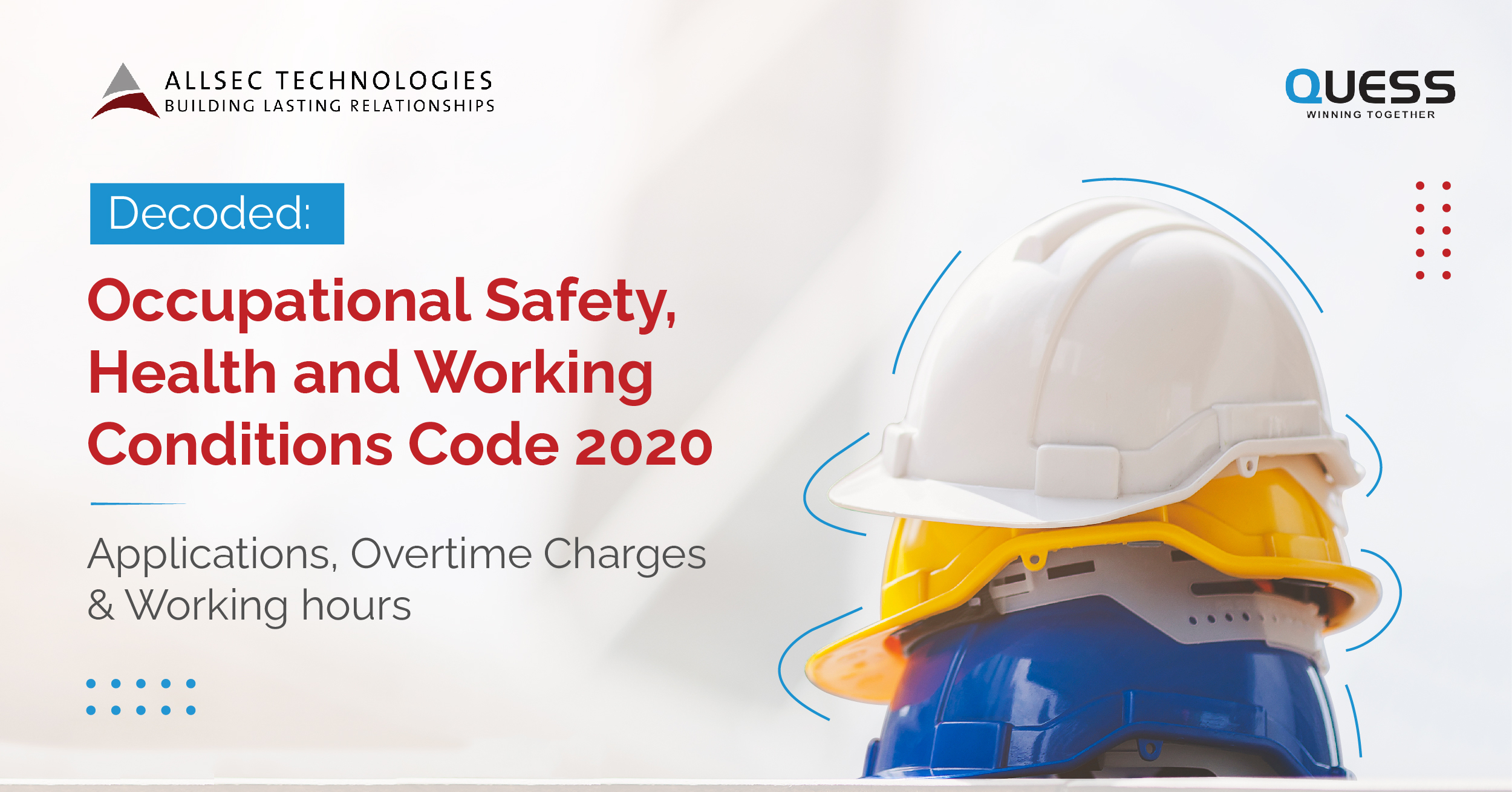
Decoded: Occupational Safety, Health and Working Conditions (OSH) Code 2020
The top priority of every organisation is to ensure employees work in a risk-free environment. The National Policy on Safety, Health and Environment at Workplace (NPSHEW) has recognized a “safe and healthy working environment as a fundamental human right.” The OSH Code 2020 is a concerted attempt to ensure employment law and employee rights are never violated.
When the OSH comes into force, it will subsume 13 existing workplace safety laws and 143 provisions into a single law. The code applies to any industry, business, manufacturer or factory that has more than 20 or more workers (if electrical power is used for manufacturing) and 40 or more workers (if manufacturing occurs without electrical power). This article will decode the key changes this code will mandate and what they mean for labour compliance, business owners, and employees.
New Definitions Proposed
Contract Labour
Individuals hired by a contractor for work connected to an establishment, regardless of the knowledge of the principal employer.
Principal employer
Any person responsible for the supervision or control of contract labour in the establishment is to be called a principal employer. The owner or manager of the establishment will also be called a principal employer.
Hazardous process
Processes or activities which involve raw materials and finished products that can cause (i) impairment to the health of the employees or (ii) pollution of the general surroundings are to be termed as hazardous.
The definitions of employer, employee, and wages have also been amended by the law, to maintain consistency with the other three, new labour codes. For a detailed explanation of these terms, read: Decoded: The Code on Wages 2019 (Part 1)
Key Changes & Highlights
The OSH code provides employers with clear diktats on how to ensure workforce safety and employee well-being. Under the code, business owners are required to undertake the following activities:
- Pay twice the usual wages if a worker is working for more than nine hours in a day or 48 hours in one week.
- Organize free health check-ups for employees annually.
- In conditions where there are more than 250 workers, welfare officers should be appointed. Earlier this cap was 500 workers or more.
- Provide canteen facilities in establishments with more than 100 workers.
- Ensure employees work only six days a week. An employee is also entitled to take one day off for every 20 days of work done, and one day off every week.
Penalties & Offences
The OSH code’s main goal is to protect employees from a hazardous working environment. To ensure this, heavy penalties have been included in the code for employers who don’t comply with labour compliance norms. Through the digitization of records and regular scrutiny by inspectors, business owners will also be subject to regular scrutiny.
The major forms of penalties are:
- Fines up to ₹10,000, If an employer violates any provision of the Code.
- Up to 3 months of imprisonment and fines of ₹1 lakh for obstruction of duties of site-inspectors.
- Any negligence, non-compliance or that results in the death of a worker is punishable with up to two years of imprisonment or a fine of up to ₹5 lakhs, or both.
In case the penalty for a particular provision is not specified, the employer can be punished with a fine between ₹2 – 3 lakhs.
How to stay compliant with the OSH Code
It is crucial for business owners to restructure their compliance framework before the Codes kick in. The best strategy is to consult with seasoned labour and employment law experts. Since labour law falls under the concurrent list, the state legislatures and the Union may have different laws. Establishments with branches in multiple states will need to stay more cautious of their compliance scores.
To understand in detail, the impact of the code on your existing compliance structure, reach out to us.



